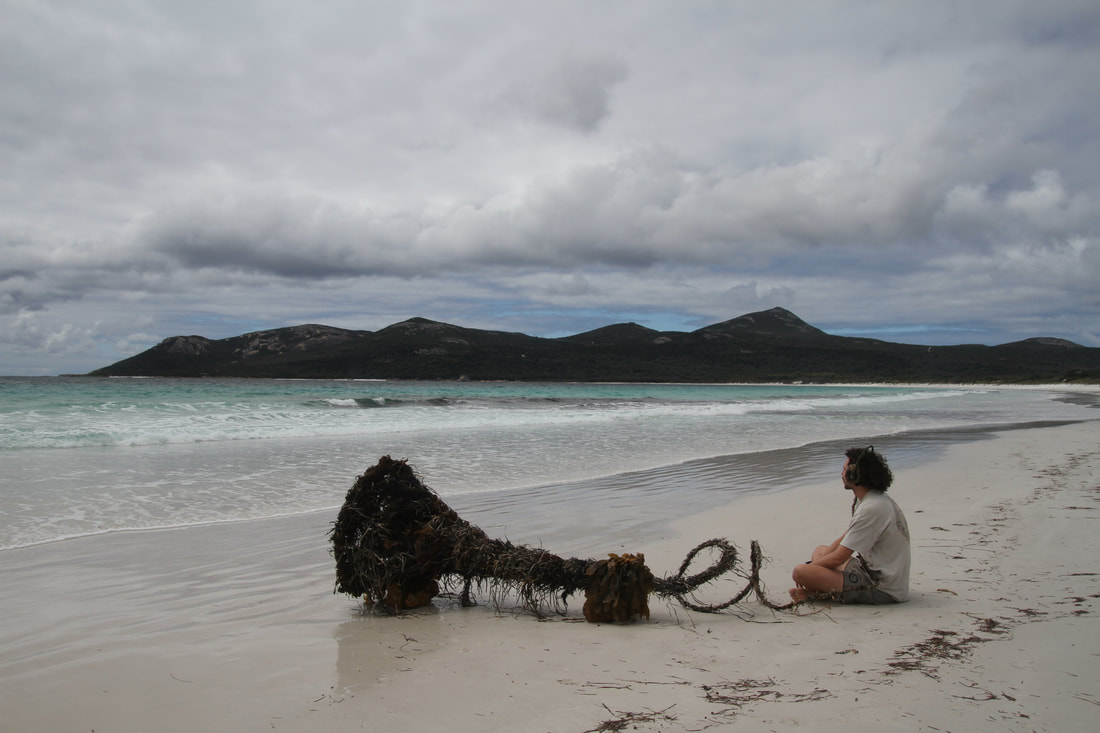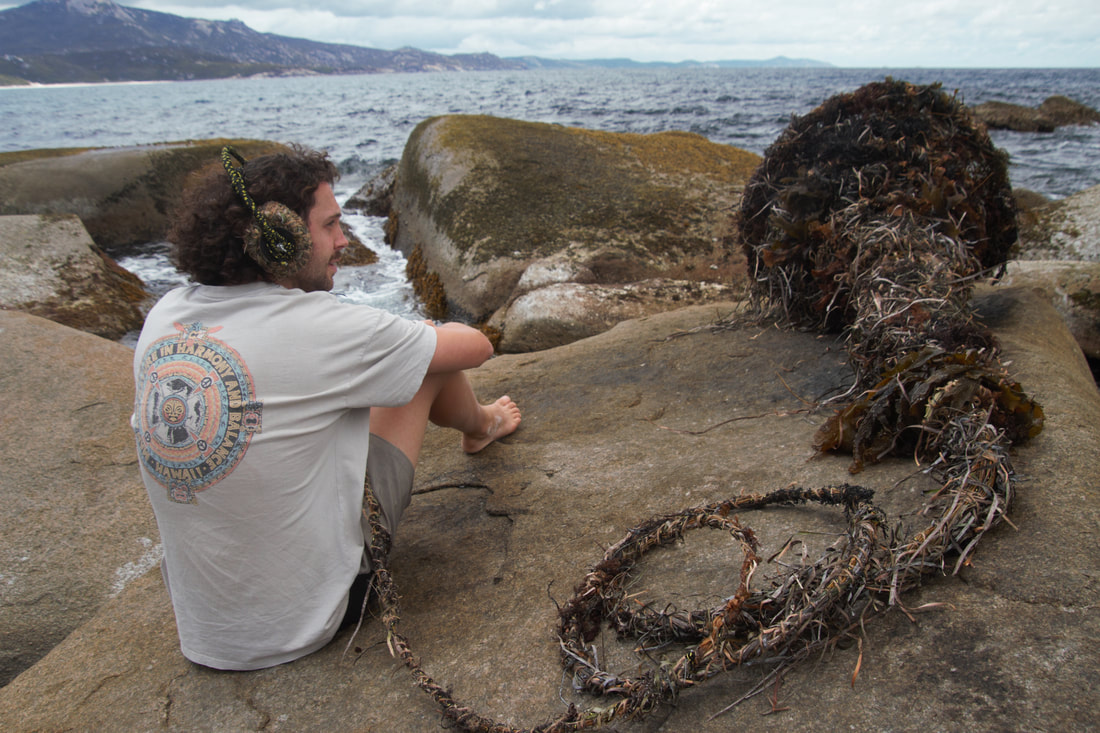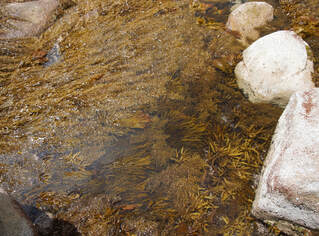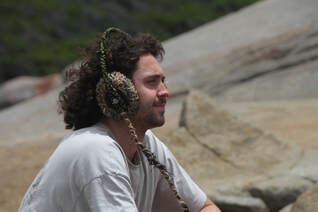|
CATHERINE HIGHAM
Posidonia Australis: Prototype for Listening various materials including seagrass, seaweed, bamboo and willow 100 x 100 x 180 NFS Two Peoples Bay is near my home, it is familiar. During whale migration I often see Southern Right Whales close to shore. You can see their beautiful luminous eyes, checking you out. Dolphins are also curious and come and see what you are. I would love to be able to communicate with them, and wonder what they would say and what could be learnt from them. This listening sculpture is a portal into a marine world. It is also a prototype in design and construction. Initially intended to be made entirely of seagrass, this proved to be impractical. Stronger materials were sourced and bamboo and willow were used to construct the armature, with sea grasses and sea weed woven in. Being able to gain insight into marine science, to observe and communicate with senior researcher Dr Elizabeth Sinclair and WAMSI Director Jenny Shaw, has been a privilege. It has also made me curious about seagrass meadows. I am interested in marine sounds and inter species communication. Scientists are making acoustic recordings of the sounds of oxygen bubbles released from sea grass meadows, during photosynthesis. This in turn indicates, it tells us, the condition of seagrass ecologies. REFERENCES Brearley, A. (2005). ‘Ernest Hodgkin’s Swanland. (2020). https://animalbiotelemetry.biomedcentral.com/articles/10.1186/s40317-020-00197-w (n.d.). https://dosits.org/people-and-sound/investigate-marine-animals/monitor-seagrass PHOTOS Photo 1. Listening horn insitu: Two Peoples Bay Photo 2. Listening horn insitu; Bettys Beach Photo 3. Rock pool seaweeds and seagrass at Bettys Beach. Photo 4. Close up of head phones. Photos by Catherine Higham |



